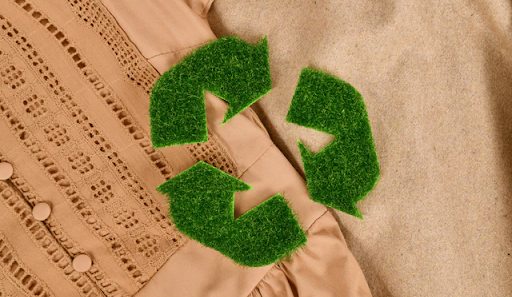Numerous conflicts worsening various areas of the world and the continuous research of new equilibrium among the major global powers make us nowadays familiar with the term geopolitics.
In the absence of a common definition recognized by all the scholars and dictionaries as well, we want to start from the definition of geopolitics given by the Oxford Languages as “politics, especially international relations, as influenced by geographical factors”.
Accordingly, the concept of geopolitics started as a study on how the geographical position and the geographical peculiarities of a state (such as the presence of borders secured by mountains or rivers) could lead the political actions of that state in respect of other states, where the first aim is protecting its own sovereignty and boosting and increasing its power on other states.
As times passed, observes noted that other peculiarities may influence the geopolitical relation, other than the pure geographical characteristics. Social behaviour, different scales of values and believes may influence indeed the actions of a state in relation to others.
In this sense it is worth noting, by way of example, that, in fact, many Western countries condition their support for developing countries on strengthening the protection of human rights. Furthermore, environmental protection is increasingly becoming a factor that may influence relations among nations.
Likewise, sustainability and its implementation in many rules related to the fashion industry are reshaping relations between different countries, opening or limiting access to richest markets.
The new corpus of rules governing fashion and sustainability in some jurisdictions (namely USA and UE) are indeed influencing the affected industries beyond the borders of the territories to which it applies.
Indeed, fashion can be viewed through the lens of geopolitics.
In today’s globalised world, power is expressed through subtle and complex systems of interdependence, namely economic dependence, the traits of which are clearly visible within the intricate and endless tiers of the textile supply chain.
The industry’s economic reach – and its impact on job creation, international trade, and economic growth – makes fashion a true soft power that exerts influence beyond national borders.
The new perspective means that the new fashion rules do not relate to the garments per se (as for rules related to the safety of dyes used for textiles) but to the way in which they are produced and the impact of production on human rights and environment. In this regard,– in terms of sourcing transparency, relevant precedents are the US Clean Diamond Trade Act of the 2003 and the Canadian Kimberley Process for the trade of rough diamonds.
This article aims to provide an example on how a highly globalized industry must deal with rules and requirements decided by those states that drive the most relevant markets and the transition towards a greener and perhaps more human-centred world.
New rules to ensure sustainability
Relegating fashion to a gilded cage of catwalks and glossy social campaigns is rather anachronistic, as the marriage of sustainability legislation and fashion transcends superficial glamour and serves as a nuanced reflection of global geopolitics and evolving regulatory trends.
In a bid to achieve climate neutrality by 2050, the old continent stands at the forefront of the green transition, propelling a transformative and ambitious agenda.
The initiatives launched have adopted a global approach, ranging from product design – with the flagship Ecodesign for Sustainable Products Regulation – to the fight against greenwashing – with the Green Claims Directive – to waste management – with the revision of the Waste Framework Directive – to reporting.
On the latter, the tension is due to the attractiveness of ESG parameters for investors as synonymous with resilience and long-term growth.
EU institutions have enacted the Corporate Sustainability Reporting Directive for large companies and are currently drafting the Corporate Sustainability Due Diligence Directive, two complementary pieces of legislation that prioritise transparency and accountability as key drivers in compelling companies to wisely manage their social and environmental impacts.
Both directives emphasise the importance of disclosing sustainability information, while considering the impacts and risks of internal sustainability targets and across the supply chain. The desired outcome is a structural synergy between sustainability strategies and business models to understand, first, how sustainability efforts affect the company’s growth and performance, both structurally and financially, and second, to make it easier for potential investors to evaluate the associated risks.
To this end, the CSRD elevates ESG reporting by fully equating it with traditional financial statements while improving comparability and interoperability through single reporting standards for the benefit of investors. The CSDDD – as sustainability goes beyond just climate – will impose environmental and human rights due diligence across all the tiers of the value chain, supported by directors’ duty of care and civil liability.
The position of the British lawmaker is not dissimilar. In the UK, sustainability is being driven by a series of wide-ranging measures such as the Green Claims Code, the Plastic Packaging Tax, and, above all, the Sustainability Disclosure Standards which are due to be implemented by July 2024 and will set out corporate disclosures on the sustainability-related risks and opportunities, with an eye to global comparability.
Across the Atlantic, the United States are strategically using sustainability initiatives as weapons to differentiate the American manufacturing sector from that of China in their ongoing trade war.
At the federal level, the Fabric Act and the Americas Trade and Investment Act aim to boost local manufacturing through tax incentives and targeted circular strategies, and offer US companies an alternative to produce domestically, by providing better infrastructure and access to low-cost capital for circular textile businesses. The ultimate goal is to incentivise the reshoring and nearshoring of manufacturing from China to the US, thus putting an end to the constant search for cheap workforce in countries with poor labour policies.
Another recent initiative is the US SEC’s long-awaited Climate Disclosure Rule, which will require both domestic and most foreign private issuers to identify and disclose material climate risks and impacts on their business strategy, operations and financial condition.
Similarly, key American jurisdictions have mirrored the same trend.
Emblematic is the New York Fashion Sustainability and Social Accountability Act – as well as its twin initiative, the Washington State’s House Bill 2028 – which mandates supply chain transparency, ESG disclosure and due diligence for apparel companies operating in New York with annual global sales of $100 million.
The state of California also experienced a major regulatory shift. Its key measures are three: California SB 253 and SB 261 which, albeit at different annual revenue thresholds, require companies operating in the state respectively to report on direct and indirect emissions and to disclose climate-related financial risk reports biannually; and the Textile Recovery Act of 2023, introduced to facilitate the collection, repair and recycling of used textiles.
As the West advances sustainability agendas, Asian powerhouses – on which global textile production has depended so far – are implicitly called to reshape their legal scenario on sustainability and labour practices.
Thus, India has recently refined the ESG disclosure scheme by introducing the Business Responsibility and Sustainability Core framework which covers, with a comprehensive approach, the risk areas related to environmental protection and human rights within the supply chain and requires top listed companies to identify and address those potential risks.
Meanwhile, in China, the days when ESG compliance was simply the result of the codes of conduct imposed by Western companies seem to be over. As Europe’s quest for environmental protection comes to a standstill, in a landmark move, the Beijing, Shanghai and Shenzhen stock exchanges have just introduced their first mandatory guidelines on ESG disclosure for major listed companies, borrowing the principle of double materiality already endorsed by the EU CSRD.
While this is undoubtedly a watershed moment, with increasing scrutiny of human rights and environmental practices, Beijing will soon be required to provide greater protection for its workers. And that future is not so distant, given the expected approval of the EU Forced Labour Regulation and the US Uyghur Forced Labor Prevention Act, both aimed at preventing goods contaminated by human rights abuses from entering or being exported to the EU and US markets.
Sustainability: a chess game where players win or lose together
Amid these legislative developments, the geopolitical implications of sustainability policies are becoming increasingly clear. Beyond the cases where the violation of environmental rules and human rights can hinder the access to the most prosperous markets, the race for sustainability is not just a domestic issue. It is rather a chess game that reflects broader international dynamics, tied together by massive regulatory reporting efforts, given the reputational value of ESG credentials as a key asset for attracting capital by providing investors with consistent, comparable, and decision-useful information.
About Authors:

Mario Di Giulio: Visiting Lecturer (Fashion and Ethics) and Member of the Scientific Committee of the Master in Fashion Law (LUISS University in Rome)
 Giulia Tuccio: LLM in Fashion Law (LUISS University in Rome)
Giulia Tuccio: LLM in Fashion Law (LUISS University in Rome)

















